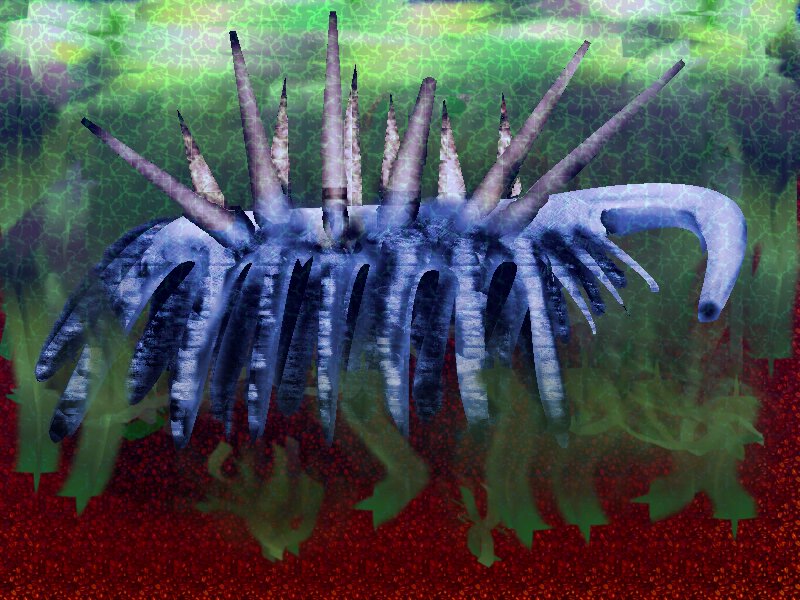
Just when you thought it couldn’t get any worse (the thing was named after a bizarre dream), it had relatives throughout the Cambrian world and maybe survives in the “velvet worms” of today.
Here, from the Royal Ontario Museum, Canada:
Upon re-examining Hallucigenia specimens using cutting edge techniques, researchers noticed that its defensive spines strongly resemble a group of small, isolated spiny elements found worldwide that had puzzled scientists for decades, with both groups of spines having subtle surface ornamentation and a structure resembling a stack of ice cream cones. These characteristics were sufficiently unequivocal for researchers to suggest that the small isolated spines were indeed related to Hallucigenia. Along with its relatives, Hallucigenia formed a group of animals that spanned the planet’s ancient Cambrian seafloors.
“From Canada to the United States, China to Mongolia, and the United Kingdom to Australia, we now know that during the Cambrian period Hallucigenia had relatives all over the world”, said Dr. Jean-Bernard Caron, Curator of Invertebrate Palaeontology at the ROM, and lead author of the study. “This study shows that because spines were more resistant to decay, they could actually preserve more readily in many conventional fossil deposits but it is only in exceptional sites like the Burgess Shale that we find complete articulated specimens with spines attached to the rest of these delicate soft-bodied animals.”
And today?
Hallucigenia bears a striking resemblance to its modern relatives, the velvet worms, which live in fallen logs in jungles throughout the world – though Hallucigenia long precedes the earliest forests, or indeed the earliest life on land.

So they never really died out, or not exactly. Oh well, they are small. We are big. And we have coffee. Note this also:
Though it was discovered more than a century ago, Hallucigenia was first restudied by renowned palaeontologist Simon Conway Morris in 1977 because of its “bizarre and dream-like quality,” much like a hallucination, and has gone on to become one of the Burgess Shale’s most recognizable creatures.